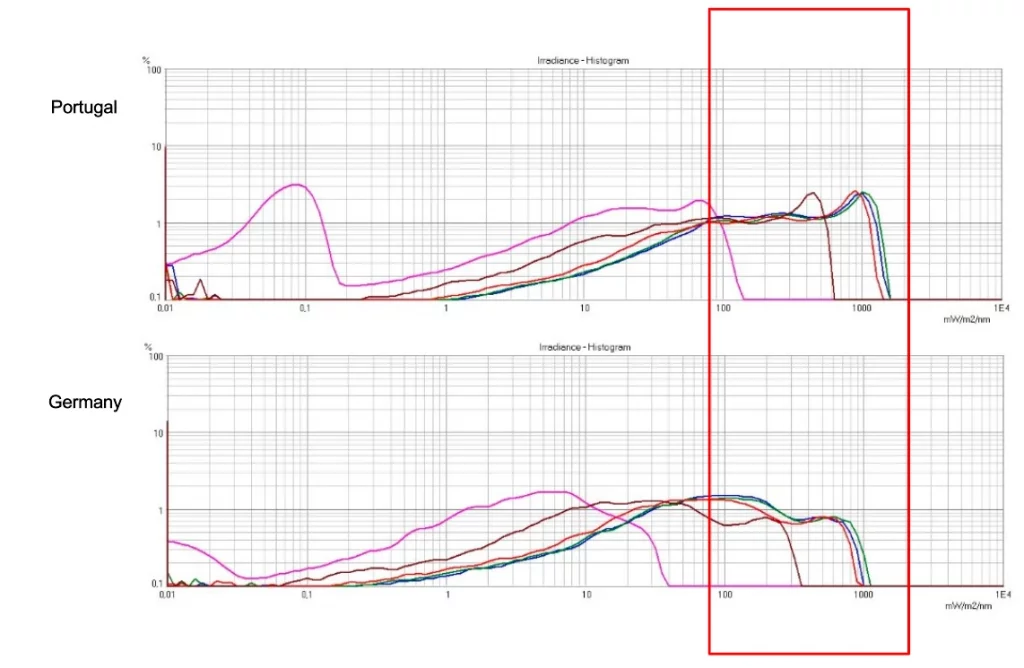
Long-term Spectral Light Analysis
Effect of Lighting Conditions on Health and Well-Being
Project Justification
Artificial lighting has a crucial effect on well–being and sleep. The effect size of natural light exposition on health and emotional states is still a matter of debate. The naturally appearing light intensity, exposition angle and light color are the major influencing parameters of these mood and health effects. Thus, this study tries to map these parameters in an long-term manner for a Mediterranean and middle European location.


Our Approach
Data collection took place for 9 months in Santiago do Cacém (Portugal) and Datteln (Germany). In both locations the following parameters were assessed: total light intensity, irradiance ratio (blue light), UV-spectral components, mood lighting, and daytime-dependent blue-to-red ratio.

Significant differences in the proportions of the color components of higher intensities can be seen.
Insights and Outcomes
Analyses revealed significant differences between the light characteristics of the two cities. The data assessed in Portugal suggests several mood related advantages in comparison to Germany. Daylight duration decreases slower, there is more lux intensity and a higher irradiance color as well as blue-to-red ratio. These findings implicate that people living in Germany are more likely to suffer from seasonal affective disorder (“winter blues”) and Vitamin D insufficiency, have a worse sleep quality, and a more irregular circadian rhythm.

Winter days in Portugal have an average light intensity of 15,000 lux, three times the intensity of an average winter day in Germany.
Related Projects
Long-term measurement of spectral light conditions in Portuguese rehab settings
Long-term psychoneuro-endocrinologic evaluation of a chronobiologically adapted light system




